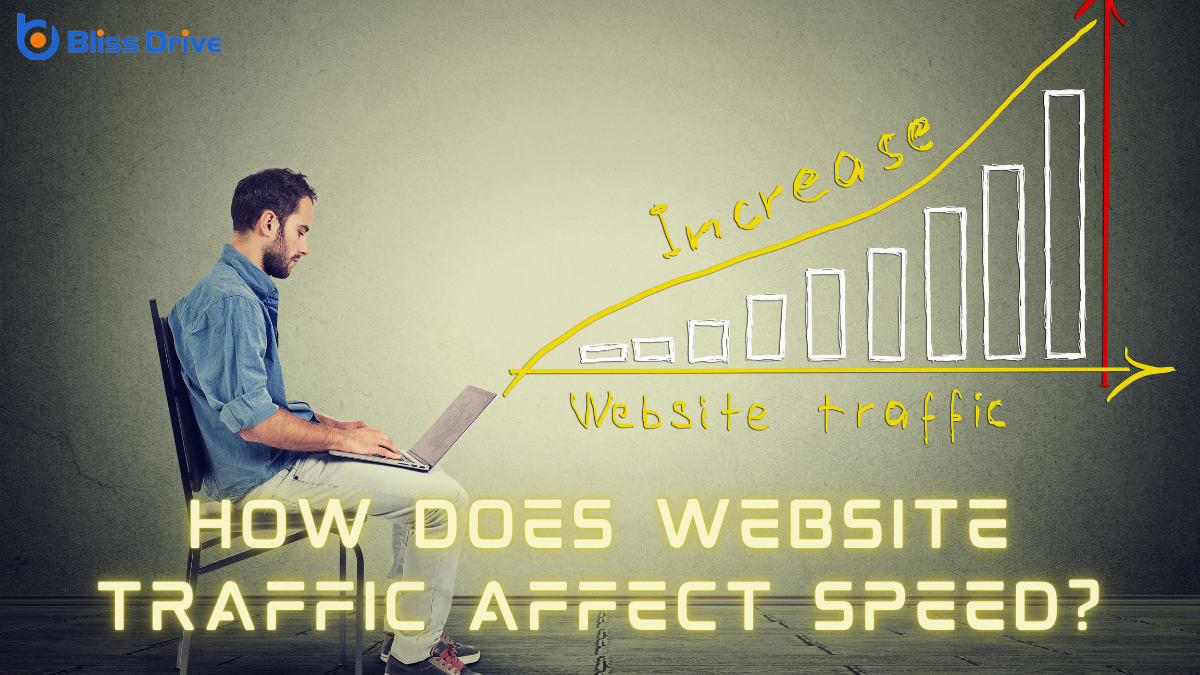Learn More About Us

Have you ever wondered why your favorite website loads slowly during peak hours? When more visitors flock to a site, it can feel like a highway jammed with traffic. As users compete for resources, site speed often takes a hit. But don't worry; there are strategies to tackle this issue and keep your site running smoothly, no matter the traffic. Curious about how to manage this challenge effectively?
Although it might seem counterintuitive, increased website traffic can sometimes slow down your site's speed. When a lot of visitors flock to your website simultaneously, each user competes for resources your site offers, like data and bandwidth. This competition can leadA potential customer referred by an affiliate who has shown interest in the product or service but h... to slower load times, causing a less-than-ideal experience for your visitors.
You might've experienced this yourself when trying to access a popular site during peak times.
To understand this relationship better, think of your website as a highway. More cars (users) mean more congestion, which slows everything down.
It's vital to monitor traffic patterns and optimize your site's infrastructure. By doing so, you can guarantee a smoother experience for everyone, even during high-traffic periods. Understanding these dynamics is key to improving overall website performance.

You need to guarantee your server can handle high traffic by effectively managing server load and understanding bandwidth allocation limits.
If your server struggles with traffic spikes, it may be time to explore scalability solutions.
When your website experiences a surge in traffic, efficient server load management becomes essential to maintaining performance and user satisfaction.
You need to guarantee your server can handle the increased demand without compromising speed. Effective load management prevents server overload, which can lead to slow response times or crashes.
Here’s what you can do:
While managing website traffic efficiently, understanding bandwidth allocation limits is essential. Bandwidth determines how much data transfers between your server and visitors' devices. If your website exceeds its bandwidth allocation, users may experience slow loading times or even downtime.
You need to know your hosting plan's bandwidth capacity to avoid these issues. Regularly monitor your website's traffic patterns to predict busy periods and adjust as needed. Consider that multimedia content demands more bandwidth, so assess your content strategyA plan for creating, publishing, and managing content to meet business goals. accordingly.
By recognizing these limits, you can guarantee your website remains responsive, even during peak traffic. Remember, staying within your bandwidth allocation helps maintain a seamless user experience, preventing frustration and keeping visitors engaged.
Keep an eye on usage to avoid unnecessary slowdowns.
To guarantee your website can handle increasing traffic demands, it’s crucial to focus on scalability solutions and understand the role server capacity plays.
Server capacity directly influences how well your site manages spikes in visitors. Failing to scale can lead to slowdowns or crashes, frustrating users.
Here are ways to make sure your server is ready:
Although many factors contribute to a website's performance, bandwidth plays an essential role in managing high traffic effectively. When your site experiences a surge in visitors, adequate bandwidth guarantees that data flows smoothly between the server and users.
Without enough bandwidth, your site may become sluggish or even crash, frustrating your audience and potentially driving them away.
You need to evaluate your site's average and peak traffic levels when choosing a hosting plan. A plan with higher bandwidth can accommodate more users simultaneously, reducing the chance of slowdowns.
Keep in mind that as your site grows, upgrading bandwidth might be necessary to maintain speed and reliability. By understanding and managing bandwidth, you can provide a seamless experience, even during high-traffic periods.
In addition to bandwidth considerations, efficient website code greatly impacts site speed and user experience. When your code is optimized, pages load faster, which keeps users engaged on your site.
Efficient code reduces the time servers need to process requests, directly affecting speed. Here’s how you can improve your website’s code efficiency:

When managing website traffic, the type of hosting you choose plays a vital role.
With shared hosting, your website shares resources with others, which can slow down traffic during peak times.
On the other hand, dedicated and cloud hosting offers more scalability and control, allowing you to handle sudden traffic spikes more efficiently.
Choosing between shared and dedicated hosting can considerably impact your website's traffic management.
With shared hosting, you share resources with other sites, which might slow down your site during traffic spikes. However, it's cost-effective for smaller sites.
Dedicated hosting, on the other hand, allocates all resources to your site, ensuring consistent performance even with high traffic. It's more expensive but ideal for large businesses with high-traffic needs.
Consider these points:
As your website's needs evolve, cloud hosting offers a flexible and scalable solution for managing traffic efficiently. Unlike traditional hosting, cloud hosting provides resources on demand, adapting to traffic spikes or drops without manual intervention.
You won't have to worry about sudden traffic surges overwhelming your server and slowing down your site. With cloud hosting, you can scale resources up or down seamlessly, ensuring peak performance at all times.
This adaptability means you're only paying for what you use, making it cost-effective. Plus, cloud hosting often comes with built-in redundancy, enhancing reliability and minimizing downtime.
Although you mightn't always notice them at work, Content Delivery Networks (CDNs) play an essential role in enhancing website speed and performance. By distributing content across multiple servers worldwide, CDNs reduce the distance data travels, ensuring users access your site quickly.
When you use a CDN, you're not just improving speed; you're also enhancing user experience and reliability. Consider these benefits:
Understanding CDNs can transform your website's performance.
Enhancing your website's performance isn't just about speed; it's about creating a seamless user experience. Start by optimizing images. Compress them without losing quality to improve load times.
Next, leverage browser caching. This allows returning visitors to load your site faster by storing elements locally.
Minify CSS, JavaScript, and HTML files to remove unnecessary characters and reduce file sizes. Don't forget to enable gzip compression to further decrease the size of your website files.
Prioritize above-the-fold content to guarantee users see the most important parts quickly. Consider implementing lazy loading for images and videos to defer loading until they're needed.
Finally, choose a reliable hosting provider to make certain your site handles traffic efficiently and remains accessible during peak times.

To truly understand how your website performs, you'll need to utilize effective monitoring tools for traffic and speed analysis. These tools help you identify bottlenecks and guarantee a seamless user experience.
They allow you to track visitor numbers, page load times, and overall site performance, giving you valuable insights for improvement.
Consider using the following tools:
With the right monitoring tools in place, maintaining your website's speed during peak traffic becomes a manageable task.
First, verify your hosting service can handle high traffic volumes. Opt for scalable solutions, like cloud hosting, that grow with your needs.
Next, optimize images and scripts to reduce load times and consider using a Content Delivery Network (CDN)A system of distributed servers that deliver content to users based on their geographic location. to distribute the load globally.
Minimize the use of external plugins that can slow down performance. Implement caching strategies to store static content, reducing server requests during peak times.
Don't forget to regularly test your site's speed using tools like Google PageSpeed Insights.
You’ve seen how website traffic can slow down your site, but you can tackle this challenge. Focus on optimizing server capacity and bandwidth to handle peaks efficiently. Improve your website's code and choose the right hosting type to boost performance. Use content delivery networks and monitoring tools to keep an eye on speed. By implementing these strategies, you’ll guarantee your site remains fast and user-friendly, even during high-traffic periods.
